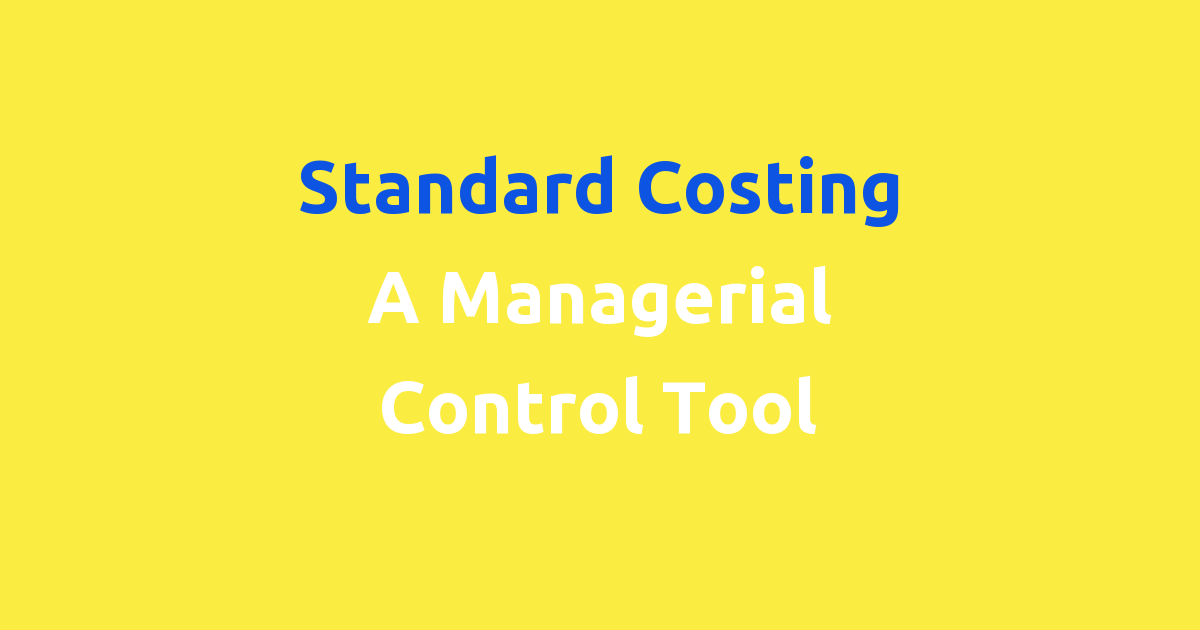Standard costing is a tool used for managerial control purposes.
Introduction
In today’s competitive business environment, it is essential for organizations to have effective cost control measures in place. One such tool that is widely used by managers for controlling costs is standard costing. Standard costing is a managerial control tool that helps in setting predetermined costs based on past performance and industry standards. This allows managers to compare actual costs with standard costs and identify areas of inefficiency.
Problem Statement
The problem with traditional costing systems is that they are based on historical data, which may not reflect the current market conditions or production processes. This can lead to inaccurate cost estimates and make it difficult for managers to make informed decisions. In addition, traditional costing systems do not provide a basis for performance evaluation or continuous improvement.
Existing System
The existing system in many organizations relies on actual costs to determine the cost of production. While this may provide an accurate picture of the costs incurred, it does not allow for proactive cost control measures. Managers are often left reacting to cost overruns rather than being able to anticipate and prevent them.
Disadvantages
There are several disadvantages of relying on traditional costing systems. One major disadvantage is that they do not provide a basis for performance evaluation. Without predetermined standards, it is difficult to assess whether costs are in line with expectations or if there is room for improvement. In addition, traditional costing systems do not allow for easy identification of cost variances or inefficiencies.
Proposed System
To address these limitations, a proposed system of standard costing can be implemented. Standard costing involves setting predetermined standards for each cost element based on historical data, industry benchmarks, and expected performance levels. By comparing actual costs with these standards, managers can identify areas of inefficiency and take corrective action.
Advantages
There are several advantages to using standard costing as a managerial control tool. One major advantage is that it provides a basis for performance evaluation. By comparing actual costs with predetermined standards, managers can assess whether costs are in line with expectations and take corrective action if necessary. In addition, standard costing allows for easy identification of cost variances and helps in controlling costs proactively.
Features
Some key features of standard costing include the setting of predetermined standards for each cost element, the comparison of actual costs with these standards, and the analysis of cost variances. By incorporating these features into the cost control system, managers can more effectively monitor and control costs. Standard costing also provides a basis for continuous improvement by identifying areas of inefficiency and implementing cost-saving measures.
Conclusion
In conclusion, standard costing is a valuable managerial control tool that can help organizations effectively monitor and control costs. By setting predetermined standards, comparing actual costs with these standards, and analyzing cost variances, managers can identify areas of inefficiency and take corrective action. Standard costing provides a basis for performance evaluation, continuous improvement, and proactive cost control measures. With the implementation of standard costing, organizations can improve cost efficiency, make informed decisions, and stay competitive in today’s dynamic business environment.

